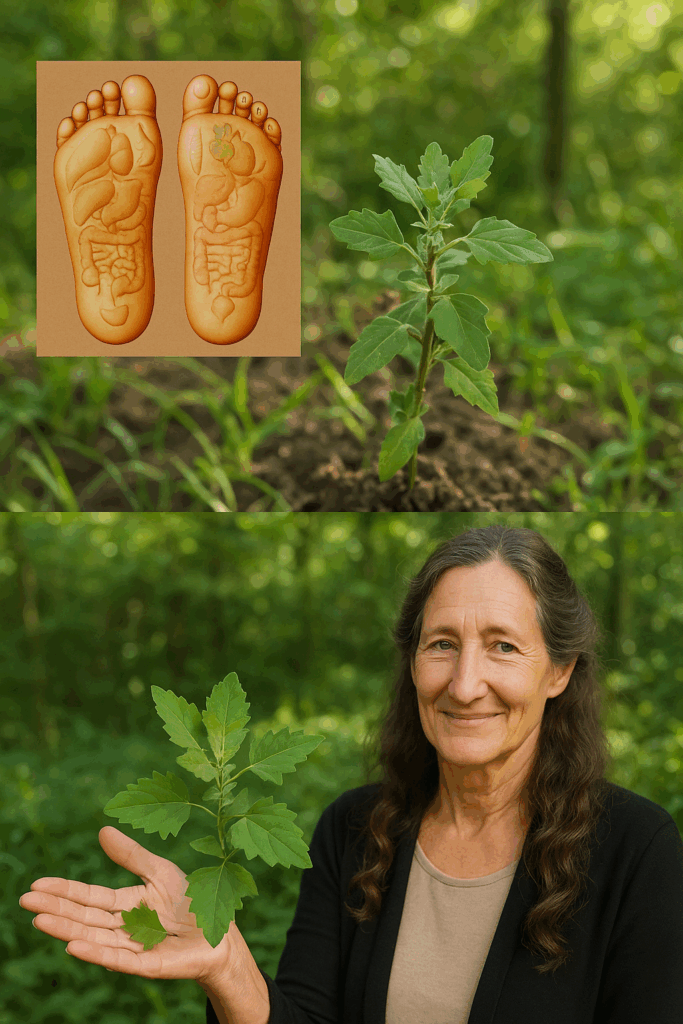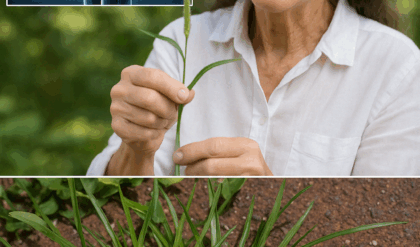What if the key to boosting your health and saving money was growing right under your nose? Lamb’s quarters, often dismissed as a common weed, is a nutritional powerhouse waiting to be discovered. Packed with vitamins, minerals, and antioxidants, this humble plant rivals spinach and kale but costs nothing to grow. In this ultimate guide, we’ll reveal why lamb’s quarters deserves a spot in your diet and how to cultivate, harvest, and enjoy it. Ready to unlock the potential of this backyard superfood? Let’s dive into its hidden benefits.

Why Lamb’s Quarters is a Nutritional Gem 🌿
Lamb’s quarters (Chenopodium album) is no ordinary weed. It’s a nutrient-dense edible packed with vitamins A, C, and K, plus minerals like calcium, magnesium, and iron. Its leaves contain more protein than many greens, making it a fantastic plant-based protein source. With antioxidant properties to combat inflammation, lamb’s quarters supports immunity, bone health, and vitality. Best of all, it grows wild in most regions, offering a free, sustainable food source for anyone willing to forage or cultivate it.
Identifying and Foraging Safely 🕵️♀️
Before you harvest, correct identification is crucial. Lamb’s quarters has diamond-shaped leaves with a slightly toothed edge and a powdery white coating on the underside, especially on young leaves. Stems are often reddish or striped, and plants can grow up to six feet tall. Found in gardens, fields, and disturbed soils, it thrives in temperate climates. Always forage in clean areas away from pollutants or pesticides. If you’re new to foraging, consult a local guidebook or expert to avoid look-alikes like toxic nightshades.
Growing Lamb’s Quarters at Home 🌱
Why forage when you can grow lamb’s quarters in your backyard? This low-maintenance plant thrives in full sun or partial shade and tolerates poor, well-draining soil. Sow seeds in spring or early summer, scattering them lightly over prepared soil. Water gently until seedlings emerge, then thin plants to 12 inches apart for optimal growth. Lamb’s quarters is drought-tolerant and rarely needs fertilizer, making it ideal for beginner gardeners. Harvest young leaves within 6–8 weeks for the best flavor.
Harvesting for Maximum Nutrition ✂️
Timing is everything when harvesting lamb’s quarters. Pick young, tender leaves and shoots for a mild, spinach-like taste. Older leaves can be tougher and slightly bitter but are still nutritious when cooked. Use clean scissors to snip leaves, leaving the plant’s base intact for regrowth. Harvest in the morning after dew dries for peak freshness. Regular trimming encourages bushier growth, ensuring a steady supply throughout the growing season.
Culinary Uses: From Smoothies to Stir-Fries 🍽️
Lamb’s quarters is as versatile as it is nutritious. Use young leaves raw in salads or smoothies for a nutrient-packed boost. Cook mature leaves like spinach—sauté with garlic, steam as a side dish, or blend into soups and stews. The seeds, similar to quinoa, can be ground into flour for baking or sprinkled over dishes for added protein. Try replacing half the spinach in your favorite recipes with lamb’s quarters for a budget-friendly twist. Always wash leaves thoroughly to remove dirt or the natural powdery coating.
Health Benefits Backed by Science 🩺
Lamb’s quarters isn’t just folklore—it’s a science-backed superfood. Its high vitamin A content supports eye health, while vitamin C boosts immunity and skin vitality. Calcium and magnesium promote strong bones, and iron combats fatigue. The plant’s antioxidants, including beta-carotene, help reduce inflammation and protect against chronic diseases. Incorporating lamb’s quarters into your diet can enhance overall wellness without breaking the bank.
Preserving Your Harvest for Year-Round Use ❄️
Don’t let your lamb’s quarters go to waste. Blanch leaves briefly, then freeze in airtight bags for up to six months. Dried leaves can be crumbled into powders for smoothies or seasonings. Seeds can be dried and stored in a cool, dark place for months. These preservation methods ensure you enjoy lamb’s quarters’ benefits even in winter, making it a sustainable addition to your pantry.
Avoiding Common Mistakes ⚠️
While lamb’s quarters is easy to grow and use, pitfalls exist. Overharvesting can weaken plants, so take only what you need. Avoid eating raw leaves in large quantities, as they contain oxalates, which may affect kidney health in excess. Cooking reduces oxalate levels, making leaves safer to consume. Always verify the plant’s identity before eating, and start with small portions if you’re trying it for the first time.
Sustainable Living with Lamb’s Quarters 🌍
Lamb’s quarters embodies sustainable living. It requires minimal water, no chemical fertilizers, and grows in marginal soils where other crops struggle. By foraging or cultivating it, you reduce reliance on store-bought greens, cutting costs and your carbon footprint. Share seeds with neighbors to spread this superfood’s benefits, fostering a community of eco-conscious eaters.
Your Journey to Superfood Mastery
Lamb’s quarters is more than a weed—it’s a game-changer for your health and wallet. From its nutrient-packed leaves to its versatile culinary uses, this plant offers endless possibilities for sustainable living. Whether you forage, grow, or cook with it, lamb’s quarters empowers you to take control of your nutrition. Start exploring this backyard superfood today and discover how a simple “weed” can transform your life.





